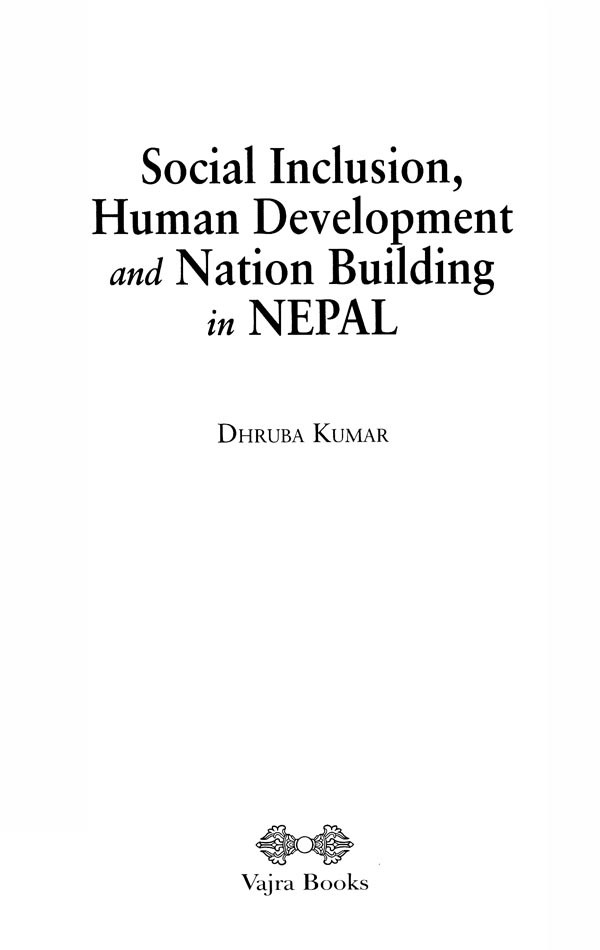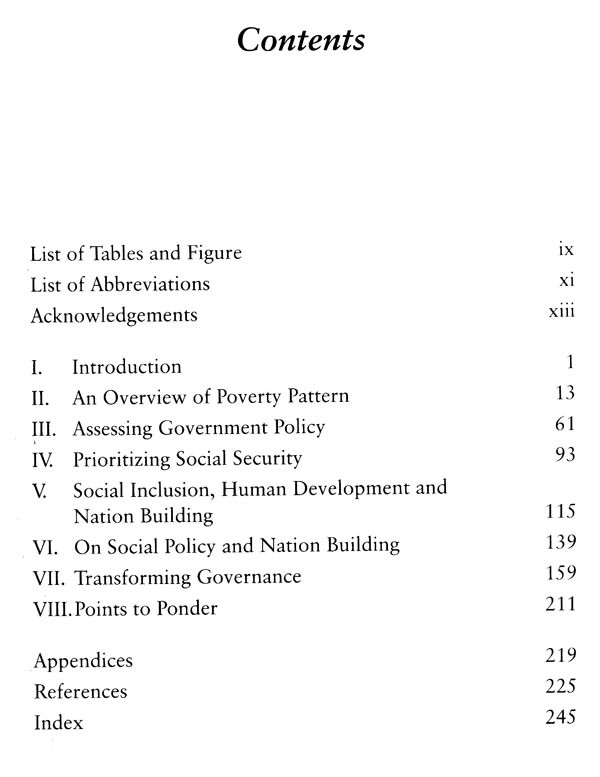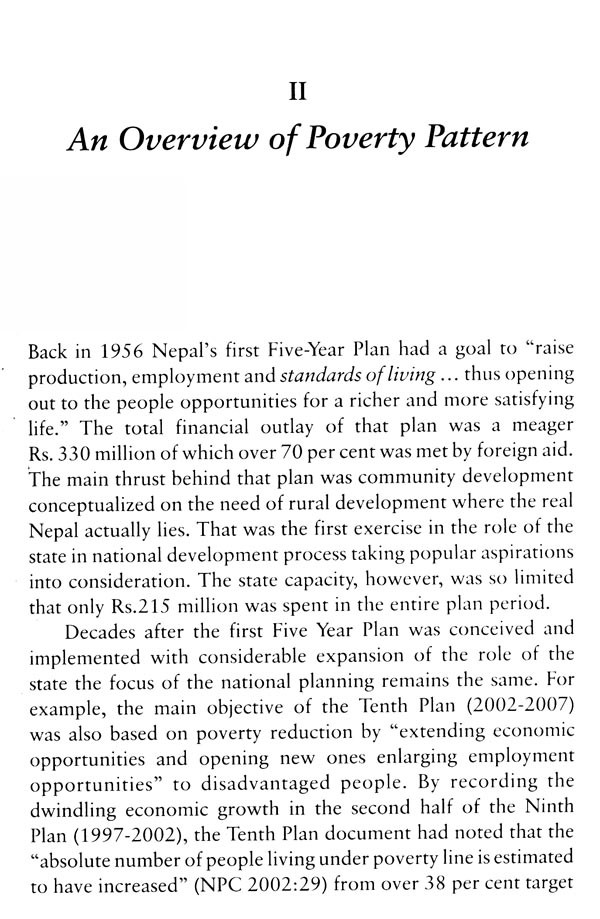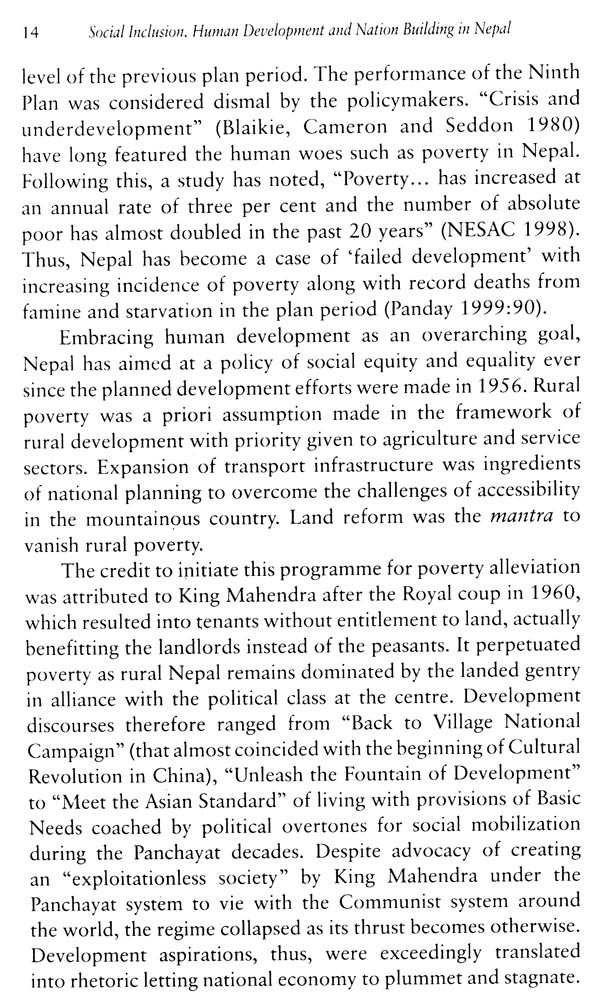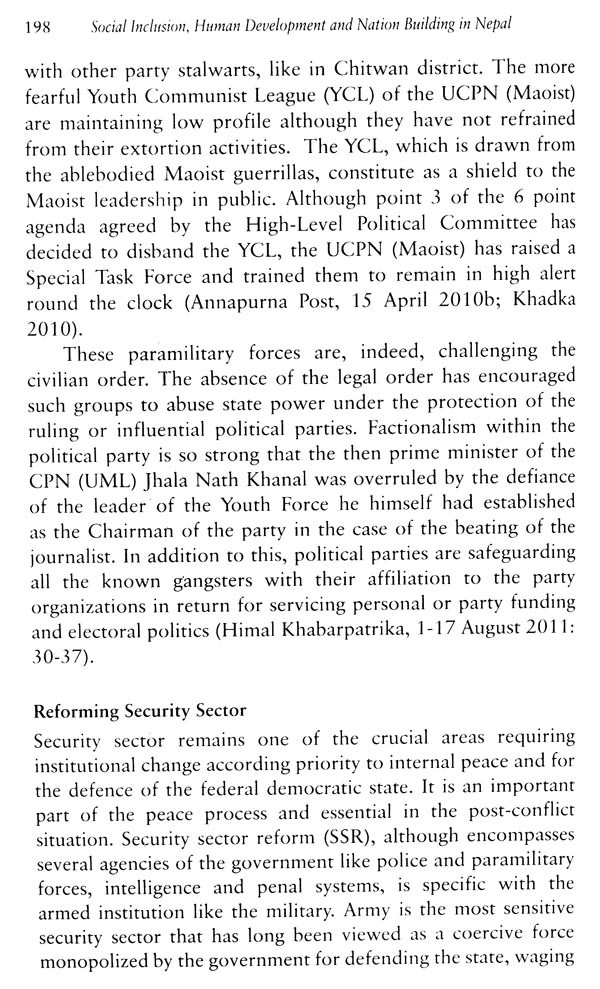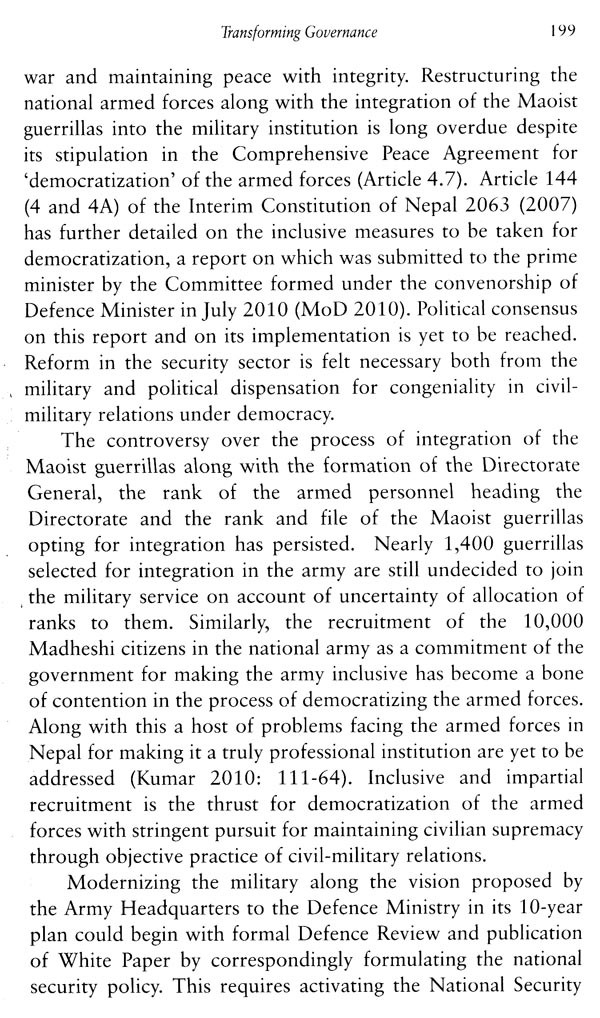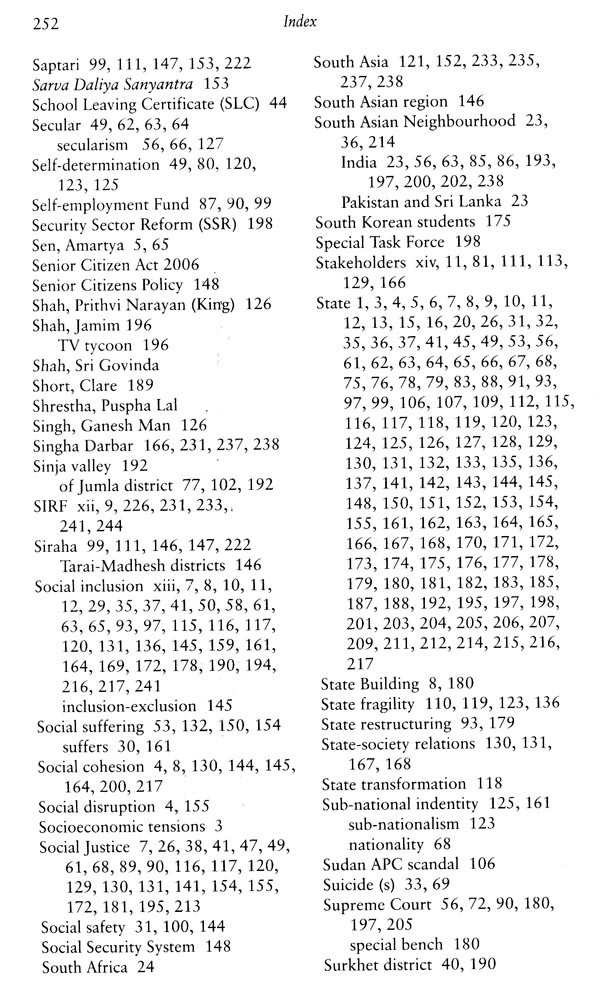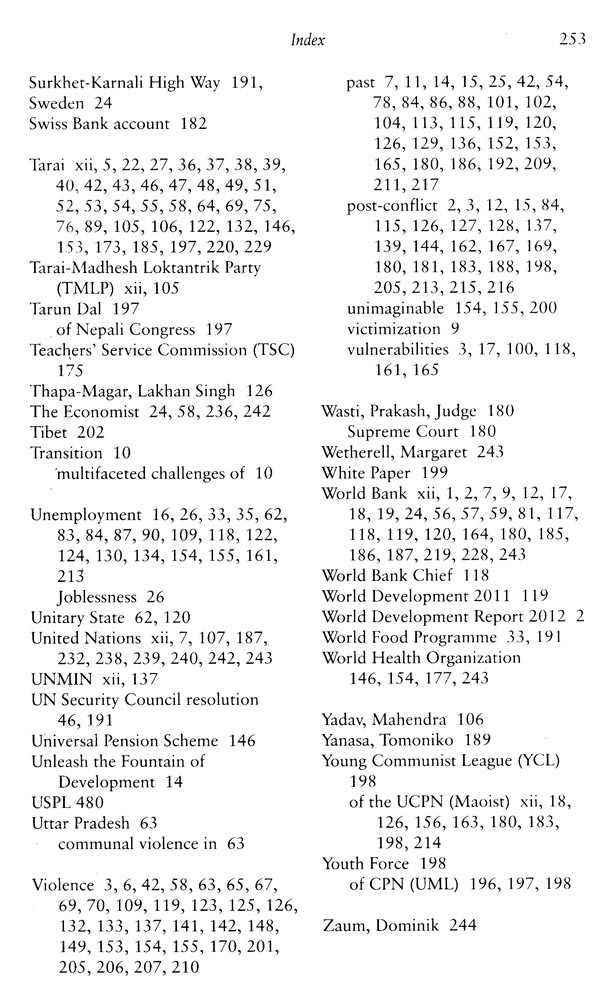About the Book Social inclusion, generally defined as a process of removing institutionalized social barrier, has become a powerful concept for development in Nepal. Exclusion is identified as the reason for perennial poverty and underdevelopment. Exclusion based on class, caste, ethnicity, language, gender, culture, religion and region is identified and discrimination against women, Dalits, disables, indigenous people, ethnic, religious minorities and Madhesis is recognized in development discourse. The focus of development thus has become human centric by "mainstreaming the poor and marginalized together with the ultra poor, vulnerable and deprived groups" as a crucial ingredient of poverty reduction strategy.
About the Author Nepal has long been identified as a country with chronic poverty and under-development. Social inclusion is therefore construed as a policy agenda to pursue in order to reverse the past pattern of state-society relationships based on the distinct caste, cultural and geographical discrimination. This book aims at setting national priorities, for example, by integrating aspirations, goals and resources. Goals and aspirations are set against the social milieu reflecting on the need of building human capital through social inclusion for human development and nation building. Thus, this study intends to examine the interrelationships of these three conceptual variables-social inclusion, human development and nation building- and explicate how these can mutually be complicit with contributing towards equity and social justice through poverty reduction in Nepal.
DHRUBA KUMAR is Professor of Political Science (Tribhuvan University, Kirtipur, Kathmandu). His books include Nepali State, Society and Human security: An Infinite Discourse (2008) and Electoral Violence and Volatility in Nepal (2010).
Introduction Social inclusion has become a powerful concept for development in Nepal ever since it was formally determined that exclusion is the reason for perennial poverty and underdevelopment. Exclusion based on class, caste, ethnicity, language, gender, culture, religion and region is identified and discrimination against women, Dalits, indigenous people, ethnic, religious minorities and Madheshis recognized. Social inclusion is generally defined as a process of removing institutionalized social barriers and "the enhancement of incentives to increase the access of diverse individuals and groups to development opportunities" (World Bank/DFID2006: 9).
The Preamble of the Interim Constitution 2007 has promulgated a policy "to resolve the persistent problems related to class, caste, regional and gender for the progressive restructuring of the state" as the federal democratic republic along with provision for autonomous local self-government through elimination of the centralized and unitary state structure (Article 138 and 139). The focus of development thus has become human centric by "mainstreaming the poor and marginalized together with the ultra poor, vulnerable and deprived groups" as a crucial ingredient of poverty reduction strategy (NPC 2003: 41).
**Contents and Sample Pages**
